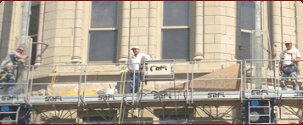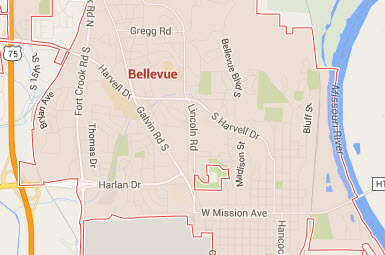Tuckpointing
Repointing also known as pointing or often referred to as tuckpointing. Repointing is the process of removing and replacing deteriorated mortar joints in a masonry wall. ( Tuckpointing technically is applying a raised mortar joint on top of an existing flush joint to create a decorative mortar joint.)
If your brick, stone or other masonry is deteriorating but the surrounding mortar is in good condition, you may have very “portland rich” mortar that is excessively hard. Mortar must be more flexible and weaker than the surrounding masonry to allow for movement and stresses.
Excessively hard mortar can create cracking of the masonry and mortar joints which can trap moisture. The freeze thaw cycles will expand the mortar and cause further deterioration of the joints and masonry. Mortar also need to be slightly more porous than the surrounding masonry so the joints can “breath” and allow moisture to evaporate.
Removal of the mortar
Before repointing can begin the existing mortar joints need to be removed. A rule of thumb is the depth of the joint to be removed should be 2 - 2 1/2 times the width of the masonry joint.
For most brick joints the depth will be 1/2”- 1”. For stone with wide joints mortar may have to be removed to a depth of several inches. Before repointing we always remove any loose or disintegrated mortar.
Mortar removal can be tedious especially with a harder portland mortar. A softer lime based mortar is easier to remove and may be done with hand tools such as a brick hammer and plugging chisel. Typically the harder mortar joint needs to be center cut with an angle grinder and removed.
Our bricklayers have many years of experience and are very careful not to leave angle grinder marks on your masonry. We also use an AS160 electric plunge saw that can precisely cut a deep square corner without damaging the masonry. In addition we use pneumatic carving tools for precise mortar removal.
Repointing
Before repointing begins we will analysis the mortar for composition and color and determine if the masonry has been repointed in the past. A modern mortar is usually repointed with Type N-which is one part portland cement - one part hydrated lime - six parts of sand. For a softer or more historical lime based mortar we could use Type O - which is one part portland cement - two part hydrated lime and 9 parts of sand. Of course our analysis may find our mortar between this range but in any case it will be softer than the surrounding masonry.
Many times when trying to match sand we will go to the local river bank to find our match. In the old days masons found their sand as close to the work as possible. Our historical mortar of choice is Ottobein 3.5 Naturally Hydraulic Lime Mortar. Please go to our Mortar Repair page for more info on hydraulic lime.
We will then prepare a sample with the chosen mortar and add color if needed. We remove an area of deteriorating mortar install the sample into your existing brick or stone joints. We then wash the brick and let the panel cure for approx. 7 days. If we are doing a color match we will usually install two or three different color options at one time. Contemporary mortar colors many times can be matched with local cement suppliers who carry premixed colored mortar which include the lime, portland and sand.




